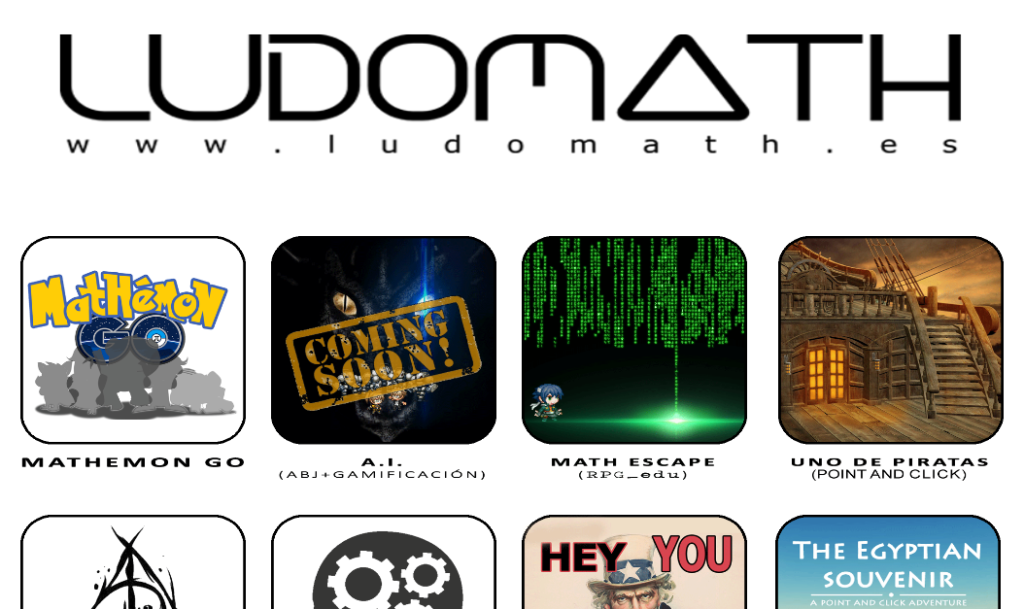Today we interview four innovative teachers who, thanks to new technologies, have managed to bring an interesting website to the classroom where mathematics take on a special meaning. It is mathematical gamification in its purest form.
How did the idea of creating Ludomath arise?
Ludomath is composed of Gabriel, Javier, Germán and David, the four maths teachers in our school, the Humanitas Bilingual School in Torrejón.
After several years working on separate projects, we decided to merge all of them in one place, in order to facilitate access to any student or teacher who would like to use them.
Ludomath was the initial name we chose for the domain of the website, and, from there, also emerged the creation of a Twitter account and a YouTube channel.
The main motivation of our projects has always been to make mathematics more attractive, hence the prefix “Ludo” and “math”.
In general, what kind of feedback have you gotten from the students?
We have focused all our projects on the use of new technologies, and whenever we have been able to create our own videogames with which to work the elements of the curriculum, we have.
In general, the feedback from the students regarding the projects has always been good and enthusiastic. However, they are long-term projects, which implies a commitment to the work in class able to maintain at all times our initial expectations.
How do you intend to keep on growing?
At this time we have long-term projects for the first three years of ESO, and we can confirm with certainty that we will also do something for fourth.
Anyway, in addition to encouraging the work of the subject in the students, the creation of this type of materials arises largely by our own tastes and hobbies, so it is not that we intend to continue growing, is that more normal is that each course that happens we are happening things that we will end up implementing if we consider that this will improve the general acceptance of the subject of mathematics.
Have you noticed improvements in the academic performance of students?
The truth is that we have not done a serious study in this regard, so we can not answer with exact data if the students are performing at a higher level. We trust that yes, and we believe that sooner or later we will analyze the results extensively. What we can talk about with certainty is the degree of motivation that this type of project generates in them, which makes them confront a subject, let’s say, “unfriendly” willingly and this for us is already a lot.
On the other hand, these projects also allow us to work on the diversification of learning and treat some parts of the agenda that sometimes does not give time to see in class, so, although we can not ensure that academic performance is improving, yes we can say that is not getting worse and that many children are learning by their own means things not treated in the classroom.
How do you think that technological resources benefit children’s learning?
In many ways. We also believe that it depends a lot on what or in what material they are used. In mathematics they allow to visualize geometrical elements that are difficult to understand, perform massive calculations, recurring algorithms, etc.
In general, we do not believe that gamification is a magic wand that makes students substantially improve their performance, but it is a help that can sometimes benefit and, however, be an error in others.
In addition to all these practical advantages, they also make the subject more attractive, which in the end is what we are looking for with the creation of videogames.
What would you say is the negative part of the gamification?
It depends a lot on the projects that are carried out, but one of the most negative parts would be the time invested in making the gamification. In our projects, we have devoted a great amount of time, and this is not always synonymous with a better achievement of the objectives set. For this reason, we consider it essential to enjoy while preparing this kind of methodologies. Otherwise, it can become very slave.
Another negative aspect may be the use of a single methodology. If students are too used to working on rewards, they may refuse to do so or slow down if they are not going to receive anything in return. This is where the design of gamification comes into play, and the experience of many projects behind it.
In general, we do not believe that gamification is a magic wand that makes students substantially improve their performance, but it is a help that can sometimes benefit and, however, be an error in others.
More information on: ludomath.es@gmail.com


